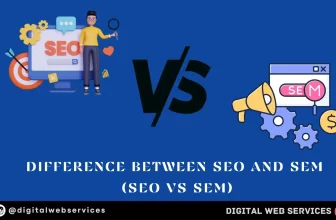
To understand how applications work, we need to understand their architecture in the first place. The following is a very short overview of the architecture of web and mobile apps. For more information, be sure to check out other blog articles discussing the subtleties of software development and much more.
Traditional Web Architecture
First, we’ll look at traditional web architecture. Web applications have a part that runs on the Internet browser, the client, and the part that runs on the web server, the server. The part that runs on the browser is called the frontend, and the part that runs on the server is the backend of the application. When a URL or web address is entered in the browser, the browser then makes a request to the server using the HTTP protocol in order to access the resource corresponding to that URL.
The web server is responsible for locating the address of the requested resource, which can be a single webpage or the homepage of a web application. It then accesses the database if its information is required and builds a response in HTML code, which is the language used to format the content of the webpage. This response is sent to the client browser that requested the resource. The browser interprets the HTML code and draws the screen, showing images, buttons, menus, controls, and all the information of the requested page. By default, the browser shows the HTML elements with a native style, that is the buttons, text, boxes, and other objects are seen according to the operating system and the browser being used. To customize the look and feel of these elements, the HTML allows including CSS, a graphic design language used to define the style of HTML documents. It has evolved in such a way that allows including animations and other advanced effects in web pages. And for the web page displayed by the browser not to be static and to achieve interactive behavior and a good user experience, the HTML code can also include JavaScript code. To enhance the JavaScript language by adding modularization, static data types and classes, many web applications also have started to use the TypeScript language, which allows converting your final code into common JavaScript.
The aforementioned architectures are quite popular and most used for web pages. However, web applications have turned to new technologies that provide greater interactivity and a better user experience.
Single-Page Applications
When the web app is required to show a lot of content on the screen, be highly interactive, and have a much faster response time than a traditional web app, a different Application architecture is used. These are called single-page applications. In this case, the app is sent to the browser, and the page is not reloaded while in use. This allows providing a user experience similar to desktop apps. This implies that almost all the functionality is handled in the client, including the generation of HTML code. To implement this solution and have the browser keep in a single page the application that requires communication with the server, JavaScript frameworks are used. These include Angular, Vue.js, and React among others.
Mobile Architecture
So far, we’ve focused on web applications. Now it is time to look at the architecture of mobile apps.
Mobile apps also have a side that runs on the client, in this case a mobile device. There is also a part running on the server, which provides information to the client. Each mobile platform has its own language – Java for Android and Swift for iOS. When compiled, the application is installed on a device. This file will contain all the business logic and also the application metadata that includes everything needed to implement the user interface and also other resources, such as URLs for each required API.
When the app is executed, it accesses the server to run the programs, services that will return the necessary data, which will be processed by the app and displayed to the user on the mobile device. One advantage is that the app will never directly access the database. This will be done through the service layer, which is independent of the device being used. Thus, when creating a solution for both the Android and iOS platforms, the apps can use the same service layer.
While native applications provide robust performance and access to device’s software and hardware resources, their main disadvantage is that you need to know how to program for different platforms. So, progressive web apps can be a good option before jumping into the native development.
Digital Web Services (DWS) is a leading IT company specializing in Software Development, Web Application Development, Website Designing, and Digital Marketing. Here are providing all kinds of services and solutions for the digital transformation of any business and website.










